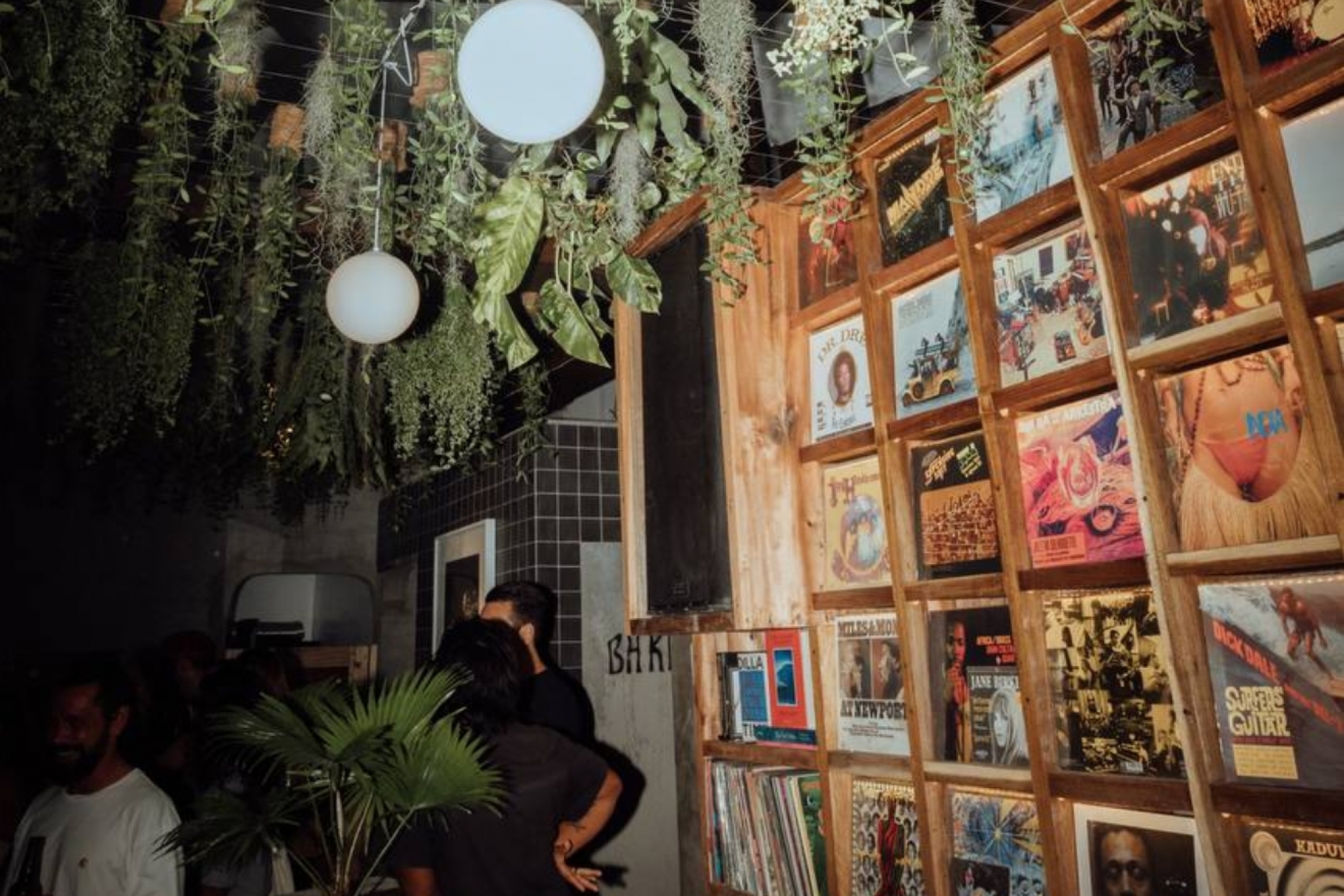 Features
Features
Making waves, digging for treasure & preserving music at Siargao’s Barbosa
Besides celebrating the music space's first anniversary this month, Tanha Kapwa shares insights into Siargao's lore and music scene
During the hectic age of Euro-dominated exploration in 1543, a Spanish conquistador charted the ‘Isla De Las Palmas’, one island out of 7000+ in the abundant archipelago he and his crew brazenly named the Philippines’ after their king, Philip II. Centuries later, this island would become the country’s surf capital. Southeast of Mindanao, Siargao is an island jungle named after the Bisaya word "Saliargaw" for a local mangrove species covering around 4,800 hectares.
The teardrop-shaped island of 437 square kilometres could fit inside Bali 5,780 km² about 13 times. Both islands are home to diverse ecosystems and also share colonial pasts. However, they differ in their tourism history.
In 1992, about 32 years or 1,647 weekends ago, John Callahan, a white Hawaiian photographer, visited Siargao for a surf trip with his friends. Unknowingly arriving during the swell season, this serendipitous journey would forever change the island's history. Guided by a local boatman, Jo-el, they found and surfed great waves for days, eventually finding the now-famous Cloud 9, named after local no-melt chocolate bars.
“Walking into town after lunch for a Cloud 9 bar and a warm Coke was one of the highlights of our day,” recalls Callahan. His sober yet captivating journal of the trip indelibly marked Siargao on the globe for surfers worldwide.
Although Callahan’s crew popularized Siargao among surfers, they weren't the island's first. Surfing in Siargao started in the ‘80s when Steve Jones and Tony Arruza first chased perfect waves in ‘Jacking Horse’, near what is now Cloud 9. These sessions called in surfers worldwide, including ‘Max Walker’, better known as ‘Mike Boyum’. Infamous as the creator of the world’s first surf camp.
Boyum is also notorious for heavy drug smuggling in the surf community during the post-Flower Power 1980s. The mysterious documentary, Sea of Darkness, fittingly tells the tale of this surf pirate and his crew who were early pioneers of the adventurous surf lifestyle now associated with brands like Quiksilver and Billabong. To sum up the legend, Boyum allegedly spent his last days hiding in Siargao, ultimately passing on to the next life after a 40-day fasting catastrophe.
The island’s energy is woven by many other potent legends such as the enchanted Bikdup City, and epitomized by the recent recovery from the devastation caused by typhoon Odette in 2021. Save for the lore, Siargao is loved by many because of its community and its surf, which is a mutual feeling shared across different generations, with Boyum in the ‘80s and Callahan in the ‘90s.
It’s more than likely the same for Jay Ru, a Manila DJ who has now been calling the island his home for almost 10 years. “Well besides falling in love with surfing, I also fell in love with the community. I made friends with the locals and the expats here,” Jay says. “I don’t know, but there is a certain energy here – the fact that I’m able to have more balance here, compared to living in the city.”

Siargao is widely recognized as a sanctuary for surfers, adventurers, and influencers. But the island’s allure definitely extends beyond and whispers in the wind suggest it's becoming fertile ground for musicians – particularly DJs. In a way that echoes how Callahan put Siargao on the global surfing map through Cloud 9, Jay Ru along with his longtime homie and collaborator, Chris Alfaro (Free the Robots), is carving a similar path within the global soundscape through Barbosa.
“Our hope is to put Siargao on the map, not just as a surfing destination and a tourist destination but also in the realm of music and art and to attract a certain kind of tourist – artists, musicians, craftsmen, chefs, barmen, writers and storytellers – and drive the culture of the island towards the arts and music and not just business and commerce. Our biggest challenge is to somehow merge both the surf and music worlds, both worlds we fully live in and love.” Notable artists, like UNOS and DJ Blockchain Algorridims, have already seen what treasure Barbosa has to offer.
“I’d like to bring more talent to the island from our global network, which is actually all in progress. We’ve come from such an abundant music background before Barbosa, and we’d like to bridge the gap between our past and present,” Chris hopes. “As we keep building the music scene here, there’s no telling what the future holds.”
With a name loosely inspired by fictional pirate lore, Barbosa set sail, opening its doors on April 8, 2023. The crew includes two DJs, Chris and Jay, alongside his girlfriend and designer Marie Alice, entrepreneur Gabriel Avencana, and surfing champions, Marama Tokong and Philmar Alipayo with his wife, actress Andi Eigenmann, among other shareholders and on-ground staff.
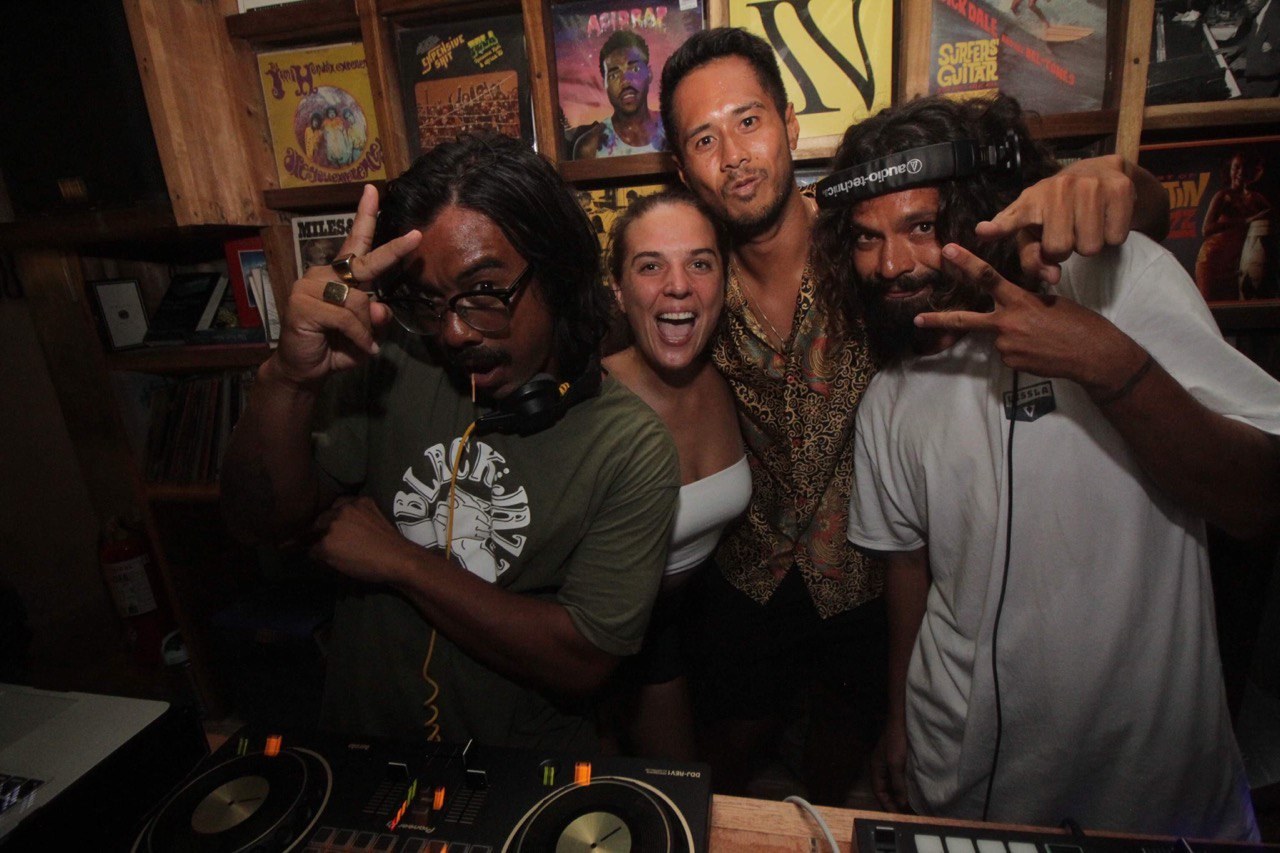
Coming from F&B backgrounds from Manila to California, the crew saw the potential of opening up something. “A vinyl bar was always in mind, but we always just put that in our back pocket. James, our landlord, introduced the idea of opening something in this location as a part of Stokehouse x VISSLA and thought we would be the perfect candidates.”
The island bar serves an exquisite menu featuring world-class cocktails and recipes by CEV, a Siargao food trip essential. Nestled on the surf shop’s second floor, Barbosa enjoys an ideal location. “Being in the centre of town, conveniently, but semi-hidden in plain sight was kind of a perfect situation for something like Barbosa,” Chris says. “People who have no idea about what we do, walk by us all the time because their focus is on the ground level. The ones who actually make their way up are always surprised we exist.”
Read this next: 15 aesthetically pleasing DJ booths from across Asia
Stepping into Barbosa, you instantly feel at home– not only because the design is ‘an extension’ of the owners' living rooms’, but it truly felt like a place on the island created for music. Adorning the wall behind the DJ booth was an eclectic collage of timeless records including an album by Asia’s Queen of Songs, Pilita, hip-hop classic ‘Enter the Wu Tang (36 Chambers)’, Gal Costa’s India, and a reissue from spiritual jazz legend Sun Ra.
“Collecting vinyl has been a part of my life for decades and finding ways to position them in rooms has always been an obsession. Every record tells a story. It’s a combination of the artwork, and the ability to shift the imagery based on how you’d like to feel. The records you have displayed can dictate your entire mood throughout the day. That said, we wanted it just to feel like any of our living rooms.”
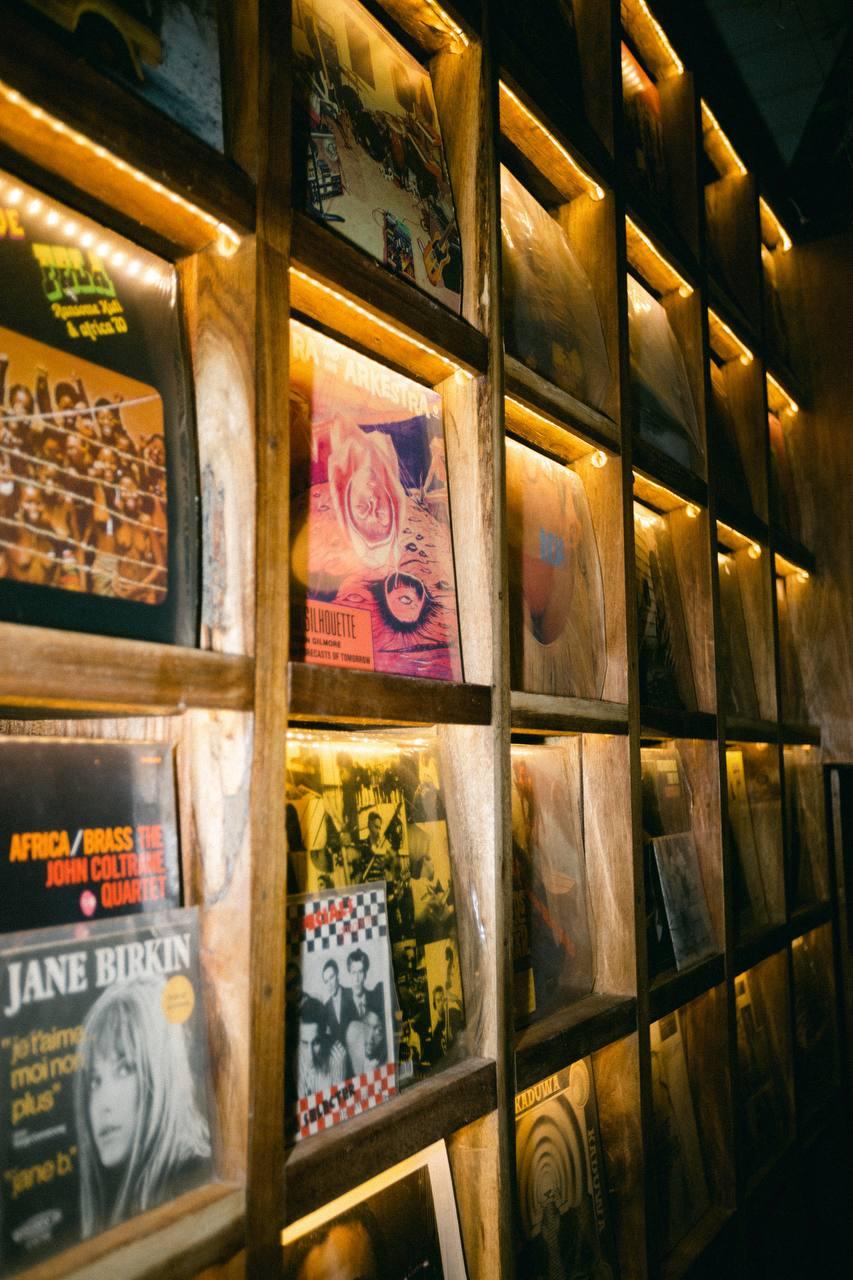

“As for the DJ nights, I myself love challenges. I like to go all over the place but make it sound cohesive enough that you’re no longer paying attention to genre, and more about the journey and overall vibe. At least, for the audience that gravitates towards Barbosa usually just gets it. Either way you’ll get unique, honest, free form experience that you will most likely not get from anywhere else.” The current program consists of – Golden Hour on Mondays, Dr. Carps’ Disco Tropico on Tuesdays, Sala Sessions w/ Mahal on Thursdays, then curated playlists on Wednesdays, Saturdays, and Sundays.
“The other nights are trusted to our community; people who we feel have a solid voice in the progression of the Siargao music scene and don’t give in to expectations. There's space for all types of musical vibes on the island and we encourage the DJs and musicians who play here to focus on their own voice. Originality is key here and our space is an outlet for that continued conversation.”
Read this next: Inside Budots, the Pinoy dance music phenomenon that took the Philippines by storm
The core of inspiration was found to be during Bread and Butter, their flagship event. “Come to a Friday night and either you get or you don't get it,” Chris banters. Barbosa’s Bread and Butter offers eclectic selections leaning more on the funkier, soulful, rawer, and deeper side of the music spectrum, reminiscent of digging culture.
Growing up to 90s hip hop, Free the Robots says this was his “gateway drug to jazz, soul, funk, disco, house, reggae, psychedelic rock, to even punk. This is how I design the nightly playlists in the space, based on my collection of records and all the new music I discover to this day. We also have crates of records donated to us from friends and labels from the US to the EU who perfectly represent the sounds we love to share. (Innovative Leisure, Ubiquity Records/ LuvN’Haight, Four Flies Records, Little Beat More and more on the way).”
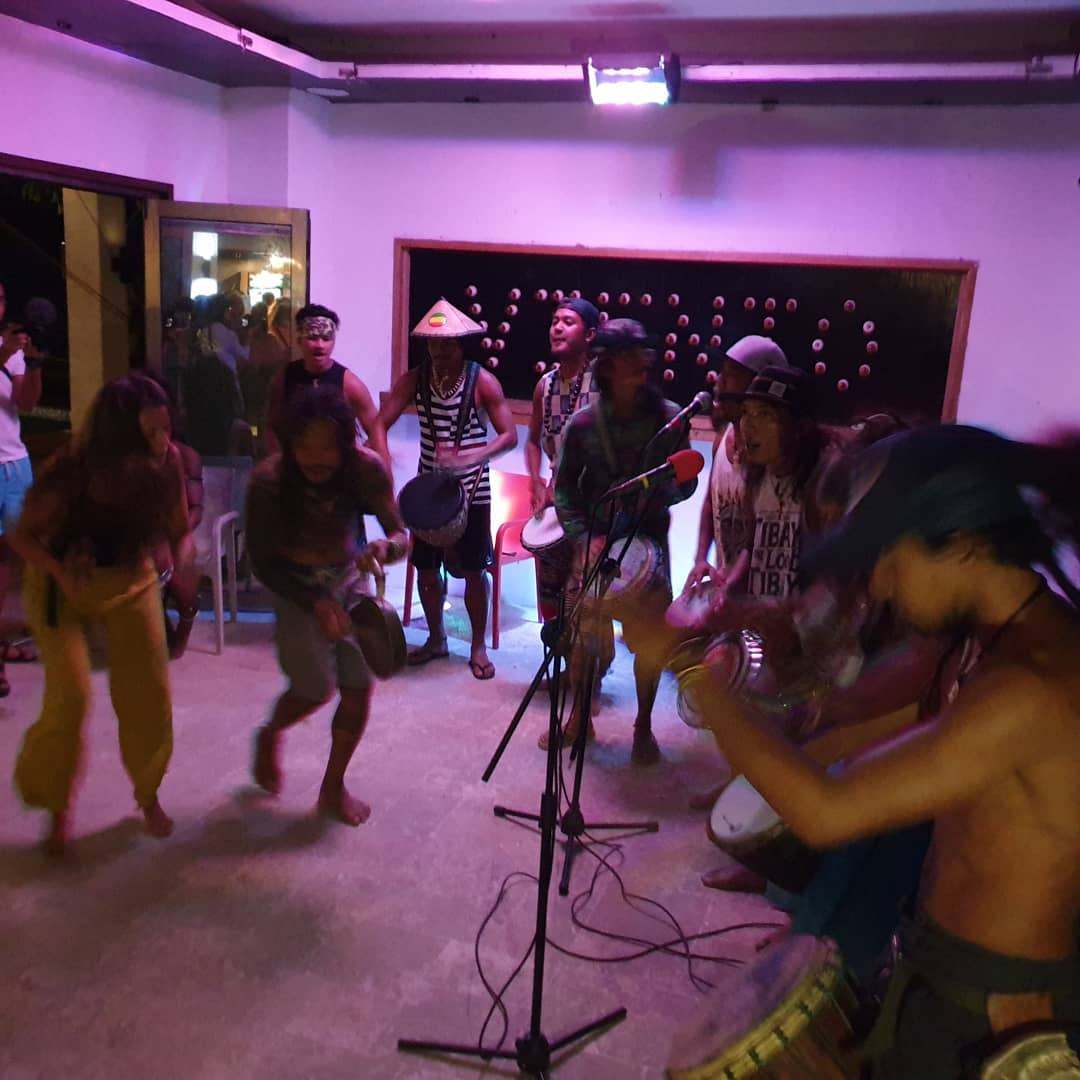

From a more rigid point of view, the genres of world disco-jazz-funk, broken beat, northern soul, balearic, and other adjacent styles are associated with the party. But that's one perspective. “It’s your experience at Barbosa that will define the name,” Chris shares. “It just sounded like a boss name to me and rolled off the tongue properly. Having no meaning behind it was the purpose.” As a solid space, Siargao’s Barbosa serves as an anchor for music seekers – in contrast to transient events like Gutinbear’s epic weekly parties and Izustarri’s special raves.
Despite just recently hoisting its sails, its potential to make waves, not just in Siargao’s music scene, but throughout the archipelago and across the seven seas, is vast. This story, a decade in the making, begins with DJs pioneering the local scene.
Other than being a guardian of Manila’s bass music, Ezzrei is also one of the pioneers of Siargao’s DJ, if not music, community. Formerly known as Camille, Ezzrei recounts that when she arrived in 2015, the music scene mainly consisted of two parties: ‘Jungle Disco’ and ‘Monday Funday’ at Pagoda beach bar, with the music being predominantly repeated mixes of Budots and reggaeton. So she opened a hostel called ‘The Hangout’, introducing music-themed nights every Friday, featuring island tunes of dub to reggae to hip-hop.
Read this next: How Nusasonic by Goethe-Institut is moulding more progressive perspectives through cross-cultural experiences
These sessions significantly diversified Siargao’s musical offerings, bringing in the island’s listeners together, even attracting Pinoy ska veteran Put3ska’s Bing Austria. These Friday nights became fundamental to Siargao's music scene and even more so for Camille leading to her first DJ gig.
“I was invited to play at Viento Del Mar, wherein I used Virtual DJ to select hip-hop tracks. That was the place that started the Friday night parties we know today – with DJs actually playing, usually techno and hip-hop, instead of playlists.” Word of the DJ’s success spread across the island leading Harana, a venue known for acoustic nights, to invite Camille to DJ after a live band, to the delight of the crowd. Much like Callahan’s first surf trip, these Harana parties became significant in the island’s lore.
Moreover, Ezzrei emphasizes the importance of the island's live music culture, noting that there definitely wouldn’t be growth for the island’s scene without it. "Sometimes, my live musician friends would play the tracks I would play during their acoustic nights, and vice-versa, promoting our nights.”
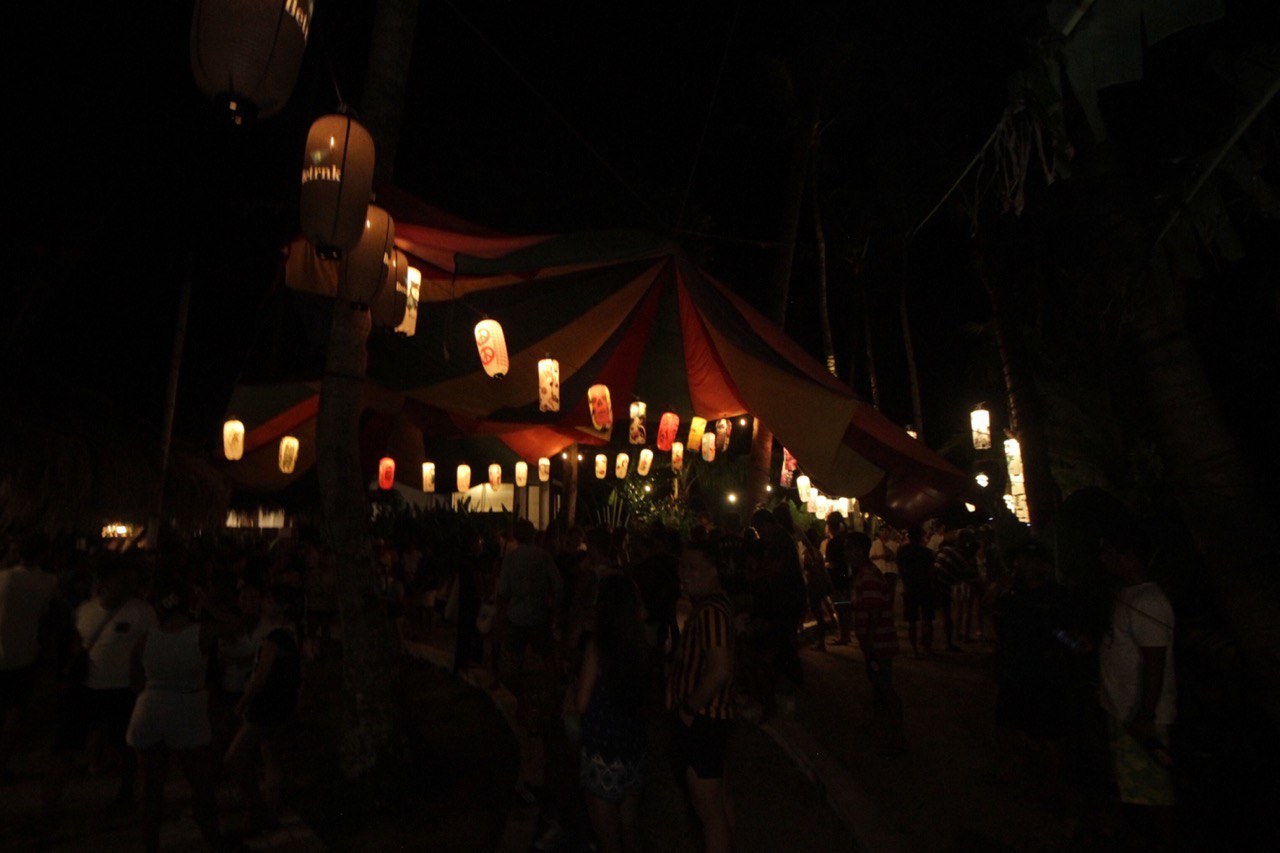
In 2016, Ezzrei invited Jay Ru to play his first DJ set on the island. Jay Ru became a notable figure in Manila's late 2010s nightlife, managing Boogie. He played key roles at underground clubs like Black Market and its notorious Bad Decisions parties, as well as XX / XX, home to the celebrated Elephant party. Jay also enhanced the scene by bringing in artists like DJ Krush, DJ Nobu and BadBadNotGood. During this vibrant era in Manila's music scene, the DJ first visited the island in 2014, amid numerous happenings. “It was maybe 2015 when I fell in love with the place. This was also the time I started to dabble with djing.” At this point, he was sure he wanted to find an anchor and so the island provided him with a chance.
He bought land with his good friend and artist, Archie Geotina. In 2017, the Harana guys booked Jay Ru, along with beatmaker/selector, Free the Robots, to play for a World Surf League competition after a party. Performing nightly gigs that week allowed them to deeply connect with the community and further solidify their love for the place. Jay shares they planned a return for two months, during which they launched Harana Sabado Nights, considerably Siargao's major party, now a weekly event for nearly 8 years. Coinciding with this, a popular film named after the island premiered, significantly boosting Siargao's fame. Jay considers the film a major factor in the island's "boom," introducing it to many Filipinos.
Having spent most of his life in Manila, he saw moving to Siargao in the late 2010s as a step out of his comfort zone for growth. And he struck gold — his unique hip-hop adjacent, eclectic style of playing was fresh and perfect on the island, contrary to the usual European deep house soundscape. “It is a melting pot of cultures and with our style of playing, where we go from one genre to another, it made sense for us to make moves here (in Siargao) – and here we are now.”
Read this next: Free the Robots manifests his musically wandering spirit into the soulful ‘Kaduwa’
Since then, he has settled in a new home, started an iconic Saturday party, and lived through catastrophes such as the Coronavirus pandemic and a destructive typhoon, amongst other potent experiences. All these adventures might have not unfolded without one of his true homies, Chris Alfaro or Free the Robots, whose island tale we have told in a previous story about ‘Kaduwa’.
Better known as Tito Chris by close friends on the island, he says that one of his best life decisions was moving to Siargao. Finding home on the island, more or less, at the same time, the music duo has been at the leading deck of the Siargao music community. With the pair being one of the early tastemakers on the island and through their Saturday party at Harana, Free the Robots and Jay Ru have been making waves and putting the island’s music scene on the map.
“The vision was to create our own space to be able to express ourselves and at the same time sort of infect the musical landscape in the island. We wanted to offer world class experience to the community while still staying true to our tastes.”

“Surfing at its core is an art form - a dance with the ocean,” shares Jay Ru. “We dance all day on the waves and keep that going on with music at night with our friends and the community.” Besides music, the surf has definitely influenced their lives, enamouring them in Siargao. “Our whole team is made up of a mash of surfers, musicians/ DJs, and visual artists. Naturally our personalities come out in our shared vision as Barbosa,” Chris says. In a mystical sense, the feeling or the benefit one gets from surfing is the same as with an enjoyer of music - be it making or listening to it. The ‘stoke’, as board riders call it, is similar, if not the same, to the energy of a unified dancefloor or a groove pocket.
“Surfing pretty much uses the same brain muscles as being in flow with music,” Chris shares. “A lot of what I do is improvisation and staying in the moment. Both activities, though different, tend to fuel each other and create the same feeling.” To dive right in, the artists’ love for both surf and music led them to Siargao. Without its figurative and literal waves, Jay and Chris wouldn’t have considered it as home. Sans the surf, they wouldn’t have been able to create the island’s new hideout for true music seekers known as Barbosa. “The space is inspired by our lifestyles living on an island, by nature, beside the ocean. As surfers, we play in nature most days riding waves with our friends. The music is influenced by a different kind of lifestyle from your usual city dweller, inspired by our surf trips with friends.”
Read this next: Your full attention: Trans representation in Manila's club scene
Paradise is where treasure is – be it waves, music, or for some, Instagram spots. Although Siargao’s scenery is truly aesthetic, it is definitely much more than that. On the surface, the island is often a place where many moving energies look to dwell, there are those that appreciate good waves and there are those who think they do. Regardless, it is easy to see that most people visit the island – for a breath of new life.
For most, the wild land may be seen as only pretty. But for those who have found home in it, one way or another, its beauty compels them to stay; it is deeply felt and understood. Rawness, adventure, freedom – these are the obvious charms that the island life enchants people with. But really, it's the magic of simplicity that captivates people. The innate yearning for harmony gets easily satiated there. That’s what the crew at Barbosa probably discovered.

It is a precious land where people feel free as much as the trees. It’s a place where one can actually dance on the waves and ride to the music. The laid-back environment of the island tends to calm life down, often uplifting connection to one’s inner self. Quite literally however, this is also caused by unintentional contemplative meditation, during brownouts and laggy internet. But this is the least of the island’s problems. The rapid growth of its population is a major cause of issues including: water supply shortages, environmental woes, and waste management. From 2022-2023, the tourism rate in Siargao was 323.56% with an increase from 125,000 to 530,000 tourists.
Locals have noticed a sharp rise in fish prices at the market, from P100 ($1.78) per kilo a few years ago to over P400 ($7.11) now, equivalent to a day's wage. They propose that a solution could be to increase the island minimum wage, if not the provincial rate. Siargao has many problems, not only due to the catch-22 of its tourism, but also from the overall political crisis the archipelago is facing which includes corruption and neo-colonialism. In a span of seven years, the island has gone through historic developments and disasters.
A documentary host on sustaining Siargao notes that many Philippine tourist spots have a dark side, often requiring the selling of a fantasy. But in Siargao, you don’t have to really do that because you see the community doing something to protect the land.
Read this next: Red-i & Soulsteppa are immersed in innumerable studio sessions & determined to share their soundsystem culture
It is inevitable to face the music – might as well make it good; remember the roots and really listen. “At this point, I've come to realize and accept that Siargao’s exponential growth is inevitable.” Jay hopes that Siargao will continue to attract people who are passionate about what they do and deliver quality products and experiences. “The point of me doing all this is to sort of do my part in making sure that the island has sanctuaries for good art and music.” The island's issues are real — but so is the power of its community and genuine hope born from innovative sustainability efforts.
Siargao isn't perfect, just like any place on Earth, but it sometimes certainly feels like it is – and it’s up to us to keep it this way.
“We’re still guests on a very local island. The community that has always existed here has always been welcoming like family, which is what attracted us here in the first place. My hope is that the progression of Siargao can maintain a level of openness and balance for the benefit of all locals, tourists and residents,” shares Chris. “We all know how money can change a local environment, especially with big business and corporations now coming in. There is a slippery slope once the tipping point is hit. Also the surf breaks.. let’s not blow up the spots!’
Follow Lokal Lab as a resource on how to protect and sustain Siargao and its communities.
Jacob Mendoza is a freelance writer for Mixmag Asia, follow him on Instagram.


